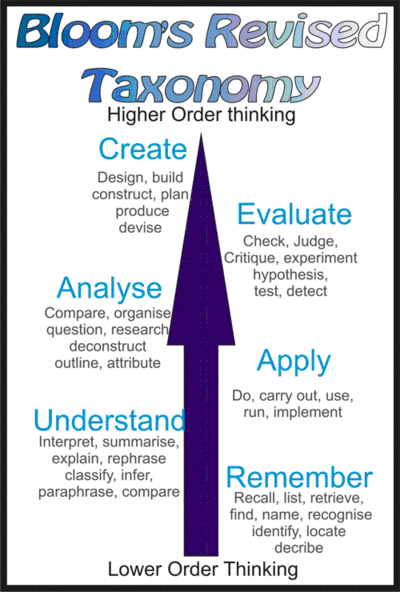

Welcome to Math Year 6!
Congraduations in completing the unit of work on fractions, decimals, percentages and the connections between them; as well as investigating positive and negative numbers in our everyday contexts.
We are going to investigate Dr Edward de Bono's Six Thinking Hats in relation to our mathematical knowledge about rational numbers. The Six Thinking Hats allows us to use our thinking skills to develop a greater understanding about different mathematic concepts.
This is supported by Blooms revised Taxonomy as we identify lower level thinking skills moving to higher order thinking.
Lets begin, and challenge ourselves to move from lower level thinking to higher order thinking.
Mission information
Group work:
Form six groups of 3-4, and work through the activities provided.
As you approach the activities consider the ways you are using Dr Edward de Bono's Six Thinking Hats as you develop your thinking skills.

White thinking hat: calls for information known or needed. "The facts, just the facts."

Yellow Thinking Hats: symbolizes brightness and optimism. You can explore the positives and probe for value and benefit.

Green Thinking Hat: focuses on creativity, possibilities, alternatives and new ideas. It is an opportunity to express new concepts and new perceptions - lateral thinking could be used here.

White thinking hat: calls for information known or needed. "The facts, just the facts."
Mathematical Language (BOS NSW, 2012)
"Students should be able to communicate using the following language: whole, equal parts, half, quarter, eighth, third, sixth, twelfth, fifth, tenth, hundredth, thousandth, fraction, numerator, denominator, mixed numeral, whole number, number line, proper fraction, improper fraction, is equal to, equivalent, ascending order, descending order, simplest form, decimal, decimal point, digit, round to, decimal places, dollars, cents, best buy, percent, percentage, discount, sale price.
The decimal 1.12 is read as 'one point one two' and not 'one point twelve'.
The word 'cent' is derived from the Latin word centum, meaning 'one hundred'. 'Percent' means 'out of one hundred' or 'hundredths'.
A 'terminating' decimal has a finite number of decimal places, eg 3.25 (2 decimal places), 18.421 (3 decimal places)." (BOS NSW, 2012)


